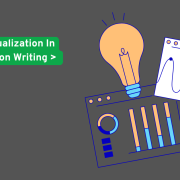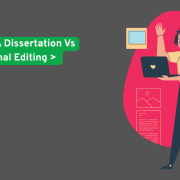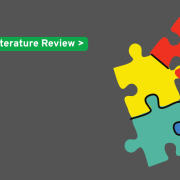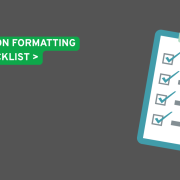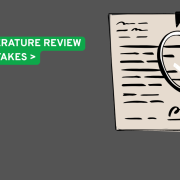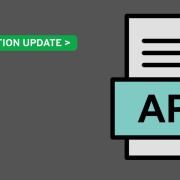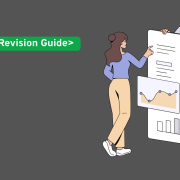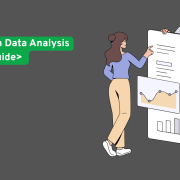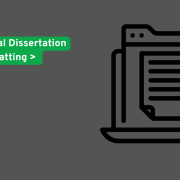Data Visualization in Dissertation Writing: How to Use Charts, Graphs, and Tables Effectively
You’ve spent countless hours collecting data, running analyses, and crafting arguments for your dissertation. Now comes the challenge that stumps many graduate students: how do you present all that valuable information in a way that actually makes sense to your readers?
Data visualization in dissertation writing isn’t just about making your work look professional—though that’s certainly a bonus. It’s about transforming complex findings into clear, compelling stories that support your research goals. Whether you’re wrestling with survey results, experimental data, or qualitative themes, the right visual approach can make the difference between a reader who gets lost in your methodology and one who clearly understands your contributions to the field.
In this guide, we’ll walk through everything you need to know about presenting data effectively in your dissertation, from choosing between charts and graphs for academic writing to mastering the technical requirements of APA format for tables and figures.
Why Data Visualization in Dissertation Matters
Picture this: you’re reading through a dissertation and encounter a dense paragraph packed with statistics, percentages, and comparisons. Your eyes glaze over, and you find yourself re-reading the same sentence three times. Now imagine encountering the same information presented in a clean, well-labeled chart. The difference is immediate and dramatic.
This scenario plays out constantly in academic reading, which is why dissertation results visualization has become such a critical skill. Visual representations help readers grasp trends, comparisons, and relationships almost instantly. Instead of forcing your committee members to decode complex numerical relationships buried in text, you’re presenting the information in a format that speaks directly to how our brains process information.
Beyond reader comprehension, effective visuals serve as powerful support for your arguments. When you claim that certain variables are correlated or that your intervention led to significant changes, a well-crafted scatter plot or line graph provides immediate, convincing evidence. This visual support becomes especially crucial during your defense, where you need to communicate complex findings quickly and clearly.
Many disciplines now expect sophisticated data presentation as a standard part of rigorous research. Whether you’re in education, psychology, business, or the sciences, your ability to present findings visually often influences how seriously your work is taken by the academic community.
There’s also a practical benefit that often gets overlooked: breaking up walls of text. Dense academic writing can be exhausting to read, and strategic placement of visuals creates natural rest points that keep readers engaged with your content.
Choosing the Right Format: When to Use What
The decision between different dissertation data presentation methods isn’t arbitrary—each format serves specific purposes and works better with certain types of information. Let’s break down when each approach shines.
Tables: Your Go-To for Precision and Detail
Tables excel when you need to present exact values, especially when those precise numbers matter to your argument. If you’re conducting survey research and need to show response frequencies across different demographic categories, a well-organized table lets readers see both the big picture and drill down into specific details.
Social sciences, health research, and technical disciplines rely heavily on tables because they accommodate large datasets without losing clarity. Consider using tables when you have categorical data that doesn’t lend itself well to visual representation, or when your readers need access to specific numerical values for their own analysis or comparison purposes.
The key to effective dissertation tables and figures lies in organization. Group related information logically, use consistent formatting throughout, and make sure your column and row headers clearly communicate what each section contains.
Bar and Column Charts: Perfect for Comparisons
When you need to compare quantities across different categories, bar and column charts are your best friends. These formats make it incredibly easy for readers to see which groups scored highest, which interventions worked best, or how different populations responded to your research questions.
These charts work particularly well for frequency data or count-based information. If you’re showing how many participants fell into different age groups, or comparing test scores across various conditions, the visual impact of bars or columns immediately communicates the relative differences.
The beauty of these charts lies in their simplicity. Readers can process the information quickly without needing to study complex visual relationships or decode complicated legends.
Line Graphs: Tracking Changes Over Time
Line graphs are indispensable for longitudinal studies or any research that examines how variables change over time. Whether you’re tracking student progress over multiple semesters, monitoring patient outcomes across treatment phases, or showing how attitudes shifted during your intervention period, line graphs tell the story of change in an intuitive way.
These visualizations work best when you have continuous data points and want to emphasize trends or patterns. The slope of the line immediately communicates whether things are improving, declining, or remaining stable, making your findings accessible even to readers who might struggle with statistical interpretation.
Pie Charts: Use Sparingly but Strategically
Pie charts have a mixed reputation in academic writing, and for good reason. They work well for showing proportions when you have a limited number of categories and want to emphasize how parts relate to the whole. However, they become problematic when you have too many categories or when the differences between segments are subtle.
In dissertation writing, consider pie charts primarily for demographic breakdowns or when you need to show percentage distributions that are central to your argument. Always ask yourself whether a simple table or bar chart might communicate the same information more clearly.
Scatter Plots: Revealing Relationships
When your research focuses on relationships between variables, scatter plots become invaluable. These graphs excel at showing correlations, outliers, and patterns that might not be obvious from statistical reports alone.
Statistics-heavy disciplines rely on scatter plots because they provide immediate visual evidence of relationships. Whether you’re examining the connection between study habits and academic performance, or exploring how different factors influence your dependent variable, scatter plots let readers see the data distribution and assess the strength of relationships for themselves.
Beyond Traditional Charts: Infographics and Concept Diagrams
Depending on your discipline and institutional guidelines, you might have opportunities to use more creative visualization approaches. Qualitative researchers often benefit from concept maps that show thematic relationships or coding frameworks. Mixed-methods studies might incorporate infographic elements that help readers understand complex methodological approaches.
However, always check with your advisor and review your program’s guidelines before incorporating non-traditional visuals. Some departments have strict requirements about acceptable visualization formats.
Best Practices That Make Your Visuals Shine
Creating effective visuals goes beyond choosing the right chart type. The difference between amateur and professional-looking dissertation results visualization often comes down to attention to detail and adherence to design principles.
Simplicity should guide every decision you make. Resist the temptation to add unnecessary elements, complex color schemes, or decorative features that don’t contribute to understanding. Your goal is communication, not artistic expression. Every element in your visual should serve a purpose.
Clear labeling cannot be overstated in its importance. Your axes must be labeled with both the variable name and units of measurement. Data sources should be obvious, either in the caption or on the visual itself. Readers shouldn’t have to guess what your numbers represent or hunt through your text to understand the context.
Consistency across your entire document creates a professional appearance and reduces cognitive load for readers. Establish a color palette, font system, and formatting approach early in your writing process, then stick to it throughout. This consistency extends to how you number figures, format captions, and reference visuals in your text.
The academic world has largely moved away from 3D effects and flashy graphics that can actually distort data interpretation. While these elements might look impressive, they often make it harder for readers to accurately assess relationships and proportions. Stick to clean, two-dimensional presentations that prioritize clarity over visual flair.
Tools That Actually Work for Academic Research
The landscape of tools for data visualization in research has expanded dramatically, but not all options are equally suited to academic work. Your choice should depend on your technical comfort level, the complexity of your data, and your institution’s software availability.
Microsoft Excel and Google Sheets remain the go-to options for many students, and for good reason. These platforms handle basic charts and graphs effectively, integrate well with statistical software, and produce visuals that meet most academic formatting requirements. While they may not offer the most sophisticated options, they’re reliable and accessible.
For students working with complex statistical analyses, SPSS, R, and Python (particularly with Matplotlib and Seaborn libraries) offer powerful visualization capabilities that integrate directly with your analytical workflow. These tools become especially valuable when you need to create multiple similar visualizations or when your data requires sophisticated statistical graphics.
Tableau, Datawrapper, and Flourish have gained popularity for their ability to create interactive and visually appealing charts. However, check whether your final dissertation format allows for interactive elements, as many institutions still require static PDFs.
For simpler needs, tools like Canva and PowerPoint can be surprisingly effective, particularly for creating flowcharts, conceptual diagrams, or basic charts that need custom formatting to match your document style.
Qualitative researchers should consider specialized software like NVivo or Atlas.ti, which can generate visual representations of coding schemes, thematic relationships, and conceptual frameworks that support qualitative findings.
Avoiding Common Pitfalls
Even well-intentioned students make predictable mistakes when incorporating visuals into their dissertations. Being aware of these common issues can save you time and improve your presentation quality.
One of the most frequent errors is mismatching chart types with data types. Using a line graph for categorical data or attempting to show correlations with a bar chart undermines the effectiveness of your presentation. Take time to consider what story your data tells and choose the format that best supports that narrative.
Many students create beautiful visuals but fail to integrate them meaningfully into their text. Your figures and tables shouldn’t exist in isolation—they should be explicitly referenced, explained, and connected to your broader arguments. Readers need guidance about what to notice and why it matters.
The opposite problem also occurs: over-visualization. Not every piece of data needs a visual representation. Use charts and graphs strategically to enhance understanding, not simply to fill space or meet an arbitrary quota. Each visual should serve a clear purpose in advancing your argument.
Technical details matter more than you might expect. Missing titles, unclear legends, or inconsistent units of measure can undermine otherwise solid research. Create a checklist of required elements and review each visual systematically before including it in your final document.
Perhaps most problematically, some students create visuals that contradict their narrative explanations. Double-check that your descriptions accurately reflect what your charts and graphs show. Discrepancies between visual and textual presentations raise questions about accuracy and attention to detail.
Integrating Visuals Into Your Dissertation Structure
Understanding how to format visuals in a dissertation involves more than creating good charts—you need to know where to place them, how to reference them, and how to ensure they comply with your style guide requirements.
The decision between in-text placement and appendix location depends on how central each visual is to your immediate argument. Figures and tables that directly support points you’re making in a specific section belong in the text, positioned as close as possible to the relevant discussion. Supplementary materials that provide additional context but aren’t essential to understanding your main points work better in appendices.
Your style guide—whether APA, MLA, Chicago, or another system—provides specific requirements for numbering, captioning, and formatting visuals. APA format for tables and figures, for instance, requires specific caption formatting, numbering systems, and placement conventions. Don’t assume these requirements are intuitive; they often differ significantly from what looks natural or aesthetically pleasing.
Effective integration means your text should prepare readers for what they’re about to see and help them interpret what they’ve seen. Phrases like “As shown in Figure 2” or “Table 3 demonstrates” create clear connections between your narrative and visual elements. More importantly, explain what readers should notice: “Figure 2 shows a clear upward trend in performance scores, with the most dramatic improvement occurring between weeks 3 and 4.”
Before submitting your final document, create a systematic review process. Check that every visual has a clear title, appropriate caption, and proper formatting. Verify that all in-text references match your numbering system. Confirm that readers can understand each visual without referring back to your methodology section.
Making Your Data Tell Its Best Story
Effective data visualization in dissertation writing is ultimately about communication. Your research represents years of work, significant financial investment, and important contributions to your field. The visuals you create should honor that investment by presenting your findings as clearly and compellingly as possible.
Remember that your committee members, future readers, and potential employers will often encounter your visuals before diving deeply into your text. These elements create first impressions and influence how seriously your work is taken. Investing time in thoughtful, well-executed visualization pays dividends in terms of impact and reception.
The goal isn’t to become a graphic design expert—it’s to become skilled at translating complex information into accessible formats that support your scholarly arguments. Whether you’re showing simple frequency distributions or complex multivariate relationships, the principles remain the same: clarity, accuracy, and purposeful design.
As you move forward with your visualization efforts, keep your readers at the center of every decision. Ask yourself whether each chart, graph, or table makes your findings more accessible and your arguments more convincing. When the answer is yes, you’re on the right track.
Your research deserves to be understood, and effective visualization is one of the most powerful tools you have for ensuring that understanding occurs. Take the time to do it well, and your dissertation will stand out for all the right reasons.

